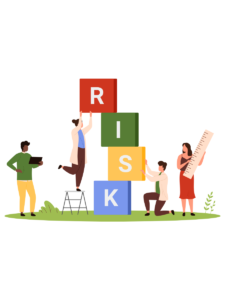
When it comes to assessing business credit risk, industry plays a significant role in determining a company’s creditworthiness. Some industries inherently pose lower risks to creditors due to stable demand, predictable revenue streams, and minimal market volatility. Understanding which industries are considered low risk can help businesses make informed decisions when seeking financing or credit. In this blog, we’ll explore the top 10 lowest risk industries for business credit, providing insights into why they are considered low risk and how businesses in these sectors can benefit.
The healthcare industry consistently ranks among the lowest risk sectors for business credit due to several factors. Healthcare services, including hospitals, clinics, and medical practices, benefit from steady demand driven by population growth, aging demographics, and ongoing medical needs. Additionally, healthcare providers often have stable revenue streams generated through insurance reimbursements, government funding, and patient payments, contributing to their strong creditworthiness.
Utilities such as electricity, water, and gas supply companies are considered low risk for business credit due to the essential nature of their services. Utilities typically operate as regulated monopolies or have limited competition, ensuring stable demand and predictable revenue streams. Furthermore, utilities often have long-standing relationships with customers and established billing processes, reducing the likelihood of payment defaults and credit risk.
The IT industry, encompassing software development, IT consulting, and cybersecurity services, is known for its low credit risk profile. IT companies benefit from strong demand for technology solutions driven by digital transformation, cloud computing, and cybersecurity threats. Additionally, IT firms often operate on subscription-based or recurring revenue models, providing predictable cash flows and minimizing credit risk for lenders and creditors.
Businesses in the professional services sector, including accounting, legal, and consulting firms, are considered low risk for business credit due to their stable revenue streams and low overhead costs. Professional service providers typically have long-term client relationships, recurring engagements, and high client retention rates, contributing to their strong creditworthiness. Additionally, professional services often have low capital expenditure requirements, reducing financial risk for creditors.
The education industry, encompassing schools, colleges, and training institutions, is characterized by stable demand and long-term revenue visibility. Educational institutions benefit from consistent enrollment patterns, government funding, and tuition fees, providing a reliable source of income. Furthermore, educational services are often recession-resistant, as individuals prioritize investing in education during economic downturns, further mitigating credit risk for lenders.
Companies providing goods and services to government agencies are considered low risk for business credit due to the stable and predictable nature of government contracts. Government contracts often have long-term durations, established payment terms, and minimal credit risk, as governments are typically reliable payers. Additionally, government contractors may benefit from preferential treatment in the procurement process, further reducing credit risk.
The waste management industry, encompassing waste collection, recycling, and disposal services, is known for its stable demand and recurring revenue streams. Waste management companies often operate on long-term contracts with commercial and municipal customers, providing essential services with limited competition. Furthermore, waste management services are often regulated and subject to environmental compliance requirements, reducing credit risk for lenders.
The insurance industry is considered low risk for business credit due to its financial stability and regulated nature. Insurance companies benefit from diversified revenue streams, including premiums, investment income, and underwriting profits. Additionally, insurance firms are subject to stringent regulatory oversight and capital requirements, ensuring their financial solvency and reducing credit risk for policyholders and creditors alike.
The pharmaceutical industry, encompassing drug manufacturing and distribution, is known for its low credit risk profile. Pharmaceutical companies benefit from patent protection, high barriers to entry, and strong demand for essential medications. Additionally, pharmaceutical firms often have robust research and development pipelines, diversified product portfolios, and global distribution networks, contributing to their strong creditworthiness.
The food and beverage industry, including food production, distribution, and retailing, is considered low risk for business credit due to its stable demand and consumer staple status. Food and beverage companies benefit from consistent consumer demand for essential groceries, beverages, and household products. Additionally, food businesses often have established supply chains, brand recognition, and pricing power, reducing credit risk for lenders and creditors.
Understanding the industries with the lowest risk for business credit is essential for businesses seeking financing or credit facilities. By operating in sectors characterized by stable demand, predictable revenue streams, and strong creditworthiness, businesses can enhance their access to capital and mitigate credit risk. Whether in healthcare, utilities, IT, or professional services, businesses in these sectors can leverage their industry’s inherent stability to secure favorable financing terms and drive long-term growth and success.
Don't just stop with this lesson, keep going. The more you read, the more you learn.
We're a dedicated team committed to empowering businesses through comprehensive credit solutions. Let's grow together!